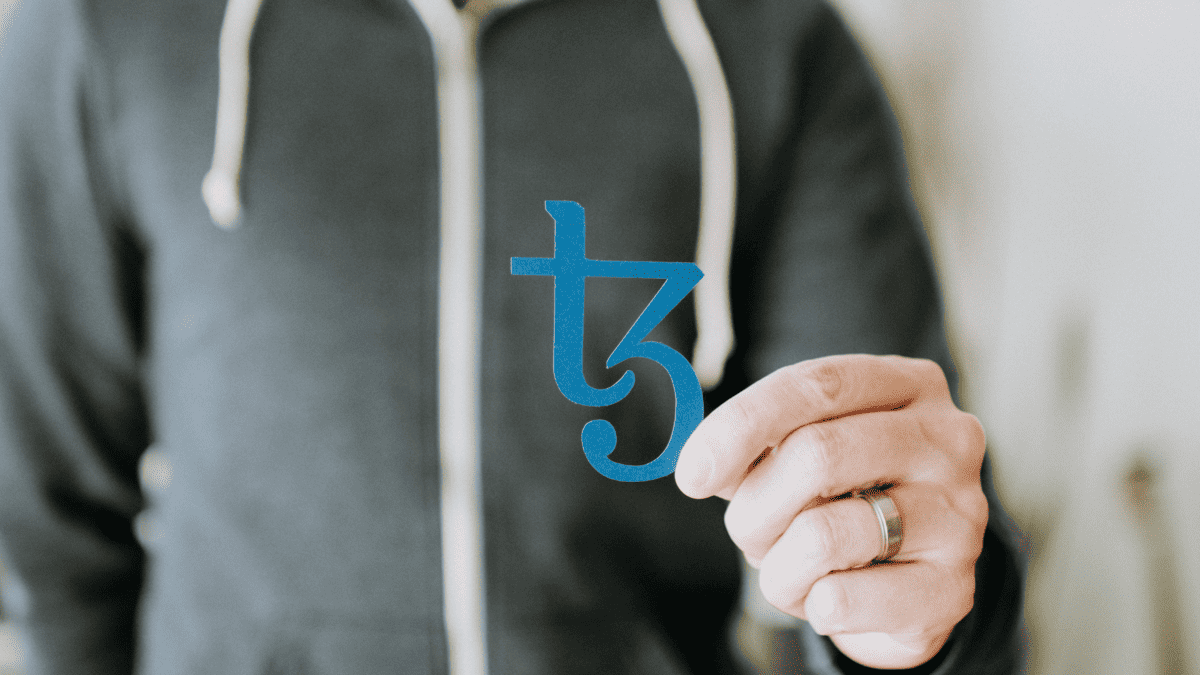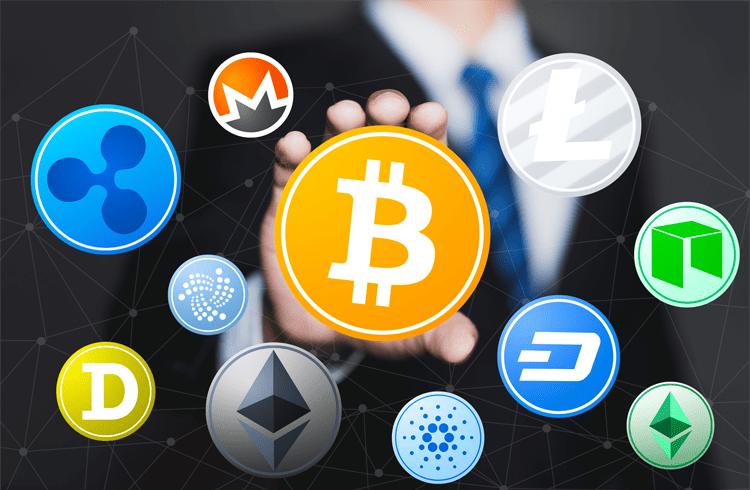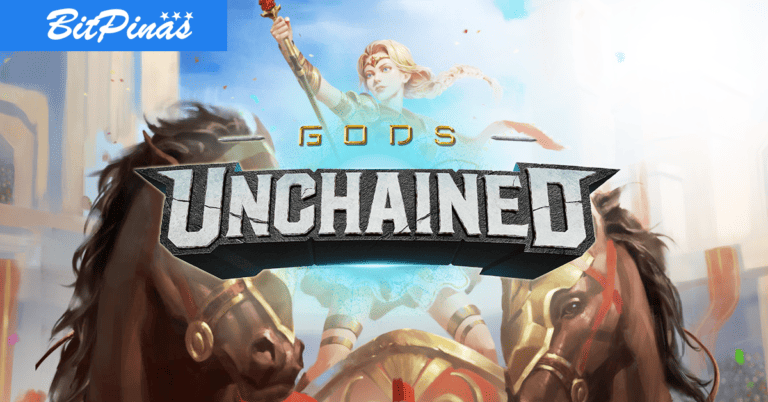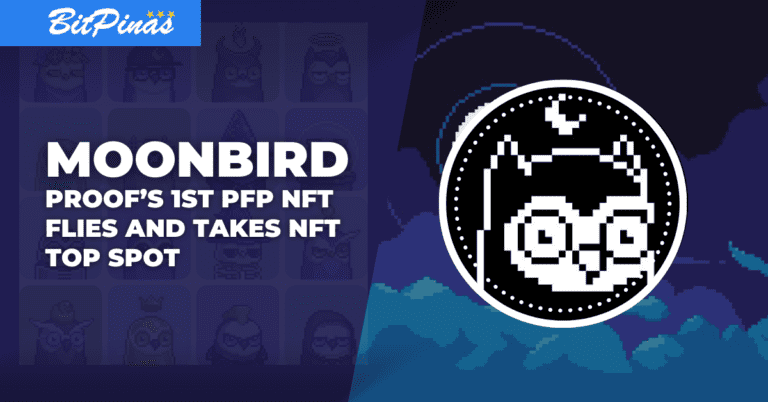All You Need to Know About Tezos Blockchain, Wallets, and Tokens
A beginners guide to blockchain in the context of the Tezos blockchain.

This article is available in English and Tagalog
We won’t go into details, as a full technical explanation of the rules of block creation or consensus building takes several pages. We just want to help newcomers understand the basics and prove that it’s not that hard.
Basics
Blockchain is a decentralized database in which records cannot be deleted or modified. It is secure: people buy millions of dollars worth of tokens and are more afraid of a price drop than of someone stealing their coins.
Blockchain requires a wallet, which is an application that stores a private key from an address, signs transactions with it, and shows which tokens the address owns.
There are several types of tokens, and all have their own purposes: native tokens pay transaction fees, stabelcoins do not fluctuate in price, governance tokens give access to voting, and utility tokens give access to application functionality.
How Does Blockchain Work?
What is a blockchain? It is a database that consists of blocks. Yet, the term often refers to the entire ecosystem: the protocol, the consensus algorithm, and the virtual machine.
What is a block in blockchain? It is a container of data: details of transactions, the hash sum of transactions, and the hash sum of the previous block.
What is a hash sum? It is the result of data conversion using a special formula. The process of converting data into a hash sum is called hashing. Hashing different data produces unique hash sums, but if you hash the same data twice, you get the same hash sum.
What is a node in a blockchain? It is a computer that keeps a copy of the blockchain and constantly checks it against copies of other nodes. Nodes are needed for decentralization: if you disable some of the nodes, the blockchain will still work.
What is a validator in blockchain? It is a node that has the right to process transactions of network participants, create new blocks and add them to the blockchain. In Tezos, validators are called bakers. You can find out more about baking from our special project about Tezos Baking.
What is blockchain protocol? It is a set of rules by which nodes and validators work.
What is the consensus algorithm in blockchain? It is a mechanism that coordinates the actions of nodes and blockchain users and determines who creates the next block. Tezos uses the Liquid Proof-of-Stake consensus algorithm.
How does blockchain work? Validators receive the transactions that network participants want to perform. The protocol selects a random validator to package all the transactions received into a block and add it to its copy of the blockchain. Other validators and nodes make sure there were no errors and then add the block to their copy of the blockchain. Once a majority of nodes have written a new block into their copy of the blockchain, the transactions in the blockchain are considered done and irreversible.
See “How Blockchain Works in General” for more details.
Why is blockchain safe to use? Blocks contain hash sums of themselves and the previous block. No node can change the data in the old block and tamper with any operation because the hash sums will change. Other nodes will realize that they are being messed with and will not include the changed block in their blockchain.
What Are Address and Wallet on Blockchain?
What is a blockchain address? An address is essentially a unique user name in blockchain.
What is a blockchain wallet? It is an application for managing an address and the funds on it. Colloquially, however, wallet means the address itself. “What’s your wallet?” often means “what’s your address?” but not “Which wallet app do you use?”
There are four types of wallets:
- Web wallets run in a browser;
- Hardware wallets are separate devices;
- Mobile wallets are apps for smartphones;
- Desktop wallets are applications for desktops and laptops;
What is a private key in blockchain? A private key is a password for managing an address. It cannot be shown to anyone or stored in places that could, in theory, be accessed by outsiders. If you lose your private key, you’ll lose access to the corresponding address and all tokens on it.
What is a mnemonic phrase? It is a set of words from which a private key can be obtained using a certain algorithm. Just like a key, a mnemonic phrase should not be shown to unauthorized people or kept in a non-secure place.
What is a wallet backup? It is a backup copy of a private key or mnemonic phrase. If the user’s device with the wallet application breaks down, or he reinstalls the operating system, or accidentally deletes the wallet, then with the help of a backup copy he will be able to access his address again. There can never be too many backups!
What does “import wallet” mean? A user can create an address using a desktop wallet, export the private key of that address. Then he can install a different wallet on his smartphone, import that private key in it and manage his old address on new device.
What Are Tokens and Transactions on Blockchain?
What are tokens? Tokens (also called “coins”) are digital assets that exist in the blockchain. They can be bought, sold, and transferred to other users. Tokens are stored at the user’s address. Often the word “cryptocurrency” refers to the native token of a blockchain.
What is a transaction in blockchain? It is the transfer of tokens from one address to another.
What is an operation in blockchain? It is any operation that is stored in blockchain: transaction, delegation, smart contract call, etc.
What is a native token? It is a token that is needed to use the basic functions of the blockchain. For example, tez (XTZ) is the native token of the Tezos blockchain. The protocol calculates validator stakes in it, validators get rewarded in it for block creation and validation, and users pay transaction fees in it.
What are utility tokens? They are needed to use some of the application’s features. For example, Unobtanium (UNO) is needed to create new land blocks in the game Tezotopia.
What is a governance token? They give you a say in the management of the application. For example, Kolibri DAO token (kDAO) holders can vote for or against proposals to add features and change commissions, as well as the distribution of rewards and the app budget allocation. Three examples of governance tokens on Tezos.
What is a stablecoin? It is a token whose price is pegged to the value of a dollar, euro, or other currency. The pegging is achieved through collateral: the owner of a stablecoin can exchange it for an actual dollar or other assets of same value at any time. Here are three examples of stabelcoins.
What are synthetic assets? They are tokens whose price is tied to the value of other tokens or marketable assets. For example, tzBTC is pegged to the price of bitcoin, and the owner of tzBTC can exchange them for regular BTC.
What is NFT? An NFT is a token to which some object is pegged: image, video, music, text. The value of any particular NFT is determined by market demand: it could be anything from zero to millions of dollars.
What is a ticker? This is a short name for a token; it looks like a collection of letters: XTZ, QUIPU, ctez, YOU. The ticker may be different from the common name of a token.
Tagalog
Mga Dapat Mong Malaman Tungkol sa Tezos, Blockchain, Wallet at Tokens
Kalimitan nating makita ang mga baguhan na nagtatanong tungkol sa mga simpleng bagay: mga blockchain principle, mga uri ng token, mga smart contract, NFT collections, at mga application. Kaya napagdesisyunan naming gumawa ng series of features na may kasagutan sa ilan sa mga pinakakaraniwang tanong.
Hindi nating tatalakayin ito nang detalyado, sapagkat ang isang buong technical explanation ng mga rules ng block creation o consensus building ay siguradong mangangailangan ng maraming page. Gusto lang naming tulungan ang mga bago lang dito na maintindihan ang basics at patunayang hindi naman ito masyadong mahirap gawin.
Basics
Ang blockchain ay isang desentralisadong database na kung saan ang records ay hindi maaaring mabura o mabago. Ito ay secure: ang mga tao ay bumibili ng milyon-milyong halaga ng tokens at mas natatakot sila sa price drop kaysa manakaw ang kanilang coins.
Ang blockchain ay nangangailangan ng wallet, isang application na nag-i-store ng private keys mula sa isang address, nagsa-sign sa transactions na kasama nito, at nagpapakita kung anong token ang pagmamay-ari ng address.
May iba’t ibang uri ng tokens, at ang bawat isa ay may kani-kaniyang layunin: ang mga native token ay pinambabayad sa transaction fees, ang stablecoins ay hindi nagpa-flucltuate sa presyo, ang governance tokens ay nagbibigay ng access sa voting, at ang utlity tokens ay nabibigay access sa application functionality.
Paano gumagana ang Blockchain?
Ano ang blockchain? Ang blockchain ay isang database na naglalaman ng blocks. Subalit, ang salitang ito ay kadalasang tumutukoy sa buong ecosystem: ang protocol, ang consensus algorithm at ang virtual machine.
Ano ang isang block sa blockchain? Ito ay isang lalagyan ng mga data: ang detalye ng mga transaksyon, ang hash sum ng mga transaksyon, at ang hash sum ng naunang block.
Ano ang hash sum? Ito ay ang resulta ng data conversion gamit ang isang espesyal na formula. Ang proseso ng pag-convert ng data sa isang hash sum ay tinatawag na hashing. Ang hashing ng iba’t ibang data ay nakakabuo ng natatanging mga hash sum, pero kung iha-hash mo ang parehong data nang dalawang beses, makakuha ka ng magkaparehong hash sum.
Ano ang node sa isang blockchain? Ito ay isang computer na nagtataglay ng kopya ng blockchain at tuloy-tuloy nitong sinisiyasat kung ito ba ay iba sa kopya na mayroon ang ibang mga node. Ang mga node ay kailangan para sa desentralisasyon: kung idi-disable ang ilang mga node, ang blockchain ay gagana pa rin naman.
Ano ang validator sa blockchain? Ito ay isang node na may karapatang magproseso ng mga transaksyon ng mga network participant, bumuo ng bagong block at idagdag ito sa blockchain. Sa Tezos, ang mga validator ay tinatawag na mga baker. Pwede mong malamang ang ilan pang bagay tungkol sa baking mula sa aming espesyal na proyekto tungkol sa Tezos Baking.
Ano ang blockchain protocol? Ito ay isang set ng rules kung saan gumagana ang mga node at validator.
Ano ang consensus algorithm sa blockchain? Ito ay isang mechanism na nagko-ccordinate sa mga action ng nodes at blockchain users at tumutukoy kung sino ang bumuo ng sumunod na block. Ang Tezos ay gumagamit ng Liquid-Proof-of-Stake consensus algorithm.
Paano gumagana ang blockchain? Ang mga validator ay nakatatanggap ng transaksyon na gustong gawin ng mga network participants. Ang protocol ay pumipili ng isang random validator na magpa-package ng lahat ng transaksyon na natangap ng isang block at idagdag ito sa kaniyang kopya ng blockchain. Sinisigurado ng ibang validators at nodes na walang anumang error at saka dinadagdag ang block sa kaniyang kopya ng blockchain. Sa oras na nasulat ng mga mayorya ng mga node ang bagong block sa kaniyang kopya ng blockchain, ang transaksyon sa isang block ay tinuturing nang tapos at hindi na maibabalik pa.
Tignan ang “How Blockchain Works in General” para sa iba pang detalye.
Bakit nga ba ligtas gamitin ang blockchain? Ang mga block ay nagtataglay ng hash sums ng kanilang sarili at ng naunang block. Walang node ang pwedeng makapagbago sa data na nasa lumang block at baguhin gamit ang anumang operation dahil ang hash sums ay mababago. Mapagtatanto ng ibang node na sila ay ginugulo at dahil dito hindi nila isasama ang binagong block sa kanilang blockchain.
Ano ang Address at Wallet sa Blockchain?
Ano ang blockchain address? Ang isang addess, sa esensya, ay isang natatanging user name sa blockchain.
Ano ang isang blockchain wallet? Ito ay isang applicaton para sa pagsasaayos ng isang address at sa funds na nandito. Sa kolokyal na salita, ang wallte ay nangangahulugang ang address mismo. “Ano nga ‘yung wallet mo?” ay minsan nangangahulugang “Ano nga ‘yung address mo?” at hindi “Anong wallet app ang ginagamit mo?”.
May apat na klase ng wallet:
- Ang mga Web wallet ay tumatakbo sa isang browser;
- Ang mga Hardware wallet ay hiwalay na mga devices
- Ang mga Mobile wallet ay apps para sa mga smartphone.
- Ang mga Desktop wallet ay apps na para sa desktop at laptop.
Ano ang isang private key sa blockchain? Ang private key ay isang password para sa pagsasaayos ng isang address. Ito at hindi pwdeng ipakita sa iba o ilagay sa lugar na, sa teorya, ay pwedeng i-access ng mga outsiders. Kung mawala mo ang iyong private key, mawawalan ka rin ng acces sa iyong address at lahat ng token na nandito.
Ano ang mnemonic phrase? Ito ay isang set ng mga salita kung saan ang private key ay pwedeng makuha gamit ang isang klase ng algorithm. Tulad sa isang key, ang mnemonic phrase ay hindi dapat ipakita sa hindi awtorisadong tao o itago sa isang hindi ligtas na lugar.
Ano ang isang wallet backup? Ito ay isang backup copy ng isang private key or mnenomic phrase. Kung ang device ng isang user na may wallet application ay masira, o kung ni-reinstall ang operating system, o aksidenteng nabura ang wallet, sa tulong ng isng backup copy, magagawa niyang maaccess ang kaniyang address ulit. Hindi pwedeng magkaroon ng maraming backup!
Ano ang ibig sabihin ng “import wallet?” Ang isang user ay maaring bumuo ng isang address gamit ang isang desktop wallet, i-export ang private key ng address na ito. Pagkatapos, pwede na niyang i-install ang isang bagong wallet sa kaniyang smartphone, i-import ang private key na ito at i-manage ang kaniyang old address sa bagong device.
Ano ang Tokens at Transactions sa Blockchain?
Ano ang tokens? Ang Tokens (o tinatawag ring “Coins”) ay mga digital asset na nag-eexist sa blockchain. Ito ay pwedeng bilhin, ibenta, at i-transfer sa ibang mga user. Ang mga token ay iniimpok sa address ng user. Kadalasan ang salitang “cryptocurrency” ay tumutukoy sa native token ng isang blockchain.
Ano ang isang transaksyon sa blockchain? Ito ay ang transfer ng tokens mula sa isang address patungong isa pa.
Ano ang isang operation sa blockchain? Ito ay kahit anong operation na naka-store sa blockchain: transaction, delegation, smart contact call, atbp.
Ano ang isang native token? Ito ay isang token na kailangan para magamit ang basic functions ng blockchain. Halimbawa, ang tez (XTZ) ay isang native token sa Tezos blockchain. Ang protocol ay nagkakalkula ng validator stakes na nandito, ang mga validator ay ginagantimpalaan dito para sa block reation at validation, at ang users ay nababayad ng transaction fees dito.
Ano ang utility tokens? Ang mga ito ay kailangan para makagamit ng ilang mga feature ng application. Halimbawa, ang Unobtanium (UNO) ay kailangan para gumawa ng bagong land blocks sa larong Tezotopia.
Ano ang governance token? Binibigyan ka nito ng opinyon sa management ng application. Halimbawa, ang Kolibri DAO token (kDAO) holders ay maaaring bumoto para o laban sa mga proposal para magdagdag ng features at magbago ng commission, pati na rin ang distribution ng rewards at ng app budget allocation. Ito ang tatlong halimbawa ng governance tokens sa Tezos.
Ano ang isang stablecoin? Ito ay isang token kung saan ang presyo ay naka-peg sa value ng ibang token o marketable assets. Halimbawa, tzBTC ay naka-peg sa presyo ng bitcoin, at ang owner ng tzBTC ay maaaring i-exchange ito sa regular na BTC.
Ano ang NFT? Ang NFT ay isang token na kung saan ang ilang object ay naka-peg: image, video, music, text. Ang halaga ng kahit anong partikular na NFT ay tinutukoy ng market demand: pwedeng ito ay kahit mula zero hanggang milyong halaga ng dolyar.
Ano ang isang ticker? Ito ay maikling pangalan para sa isang token; ito ay mukhang isang koleksyon ng mga letra: XTZ, QUIPU, Ctez, YOU. Ang ticker ay pwedeng maiba sa karaniwang pangalan ng isang token.
This article is from Tezos Ukraine translated into Tagalog by BitPinas for TZ APAC: All You Need to Know About Tezos Blockchain, Wallets, and Tokens
Disclaimer: BitPinas articles and its external content are not financial advice. The team serves to deliver independent, unbiased news to provide information for Philippine-crypto and beyond.




